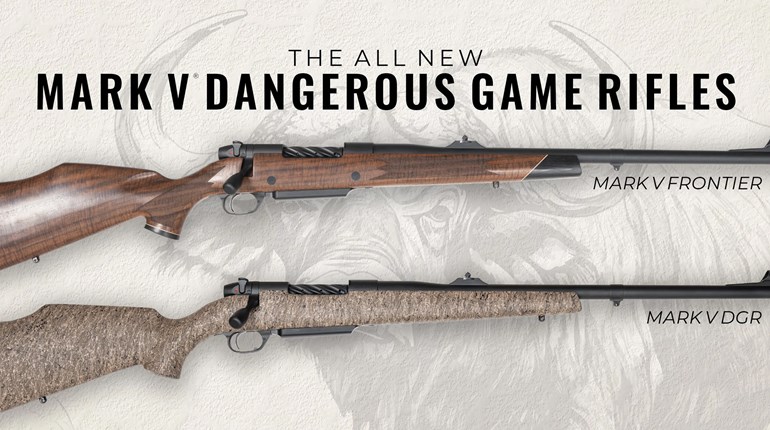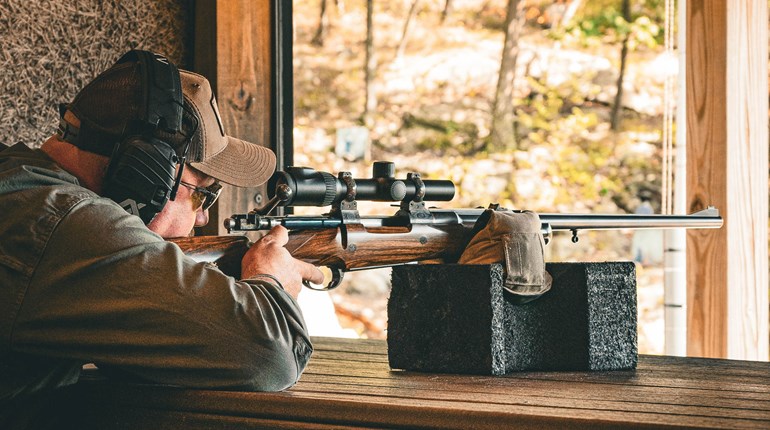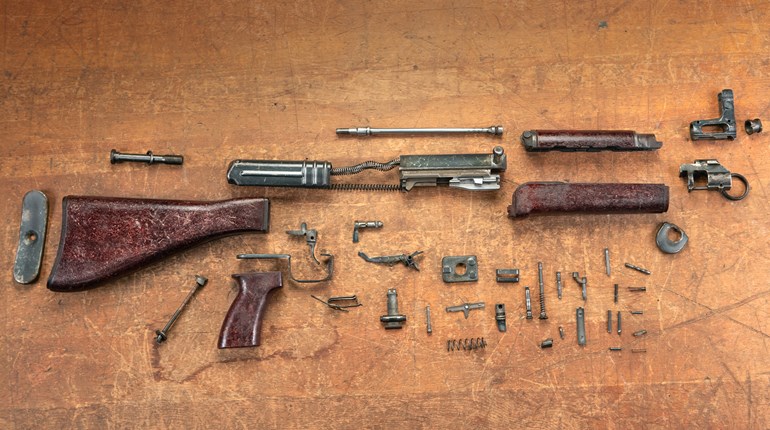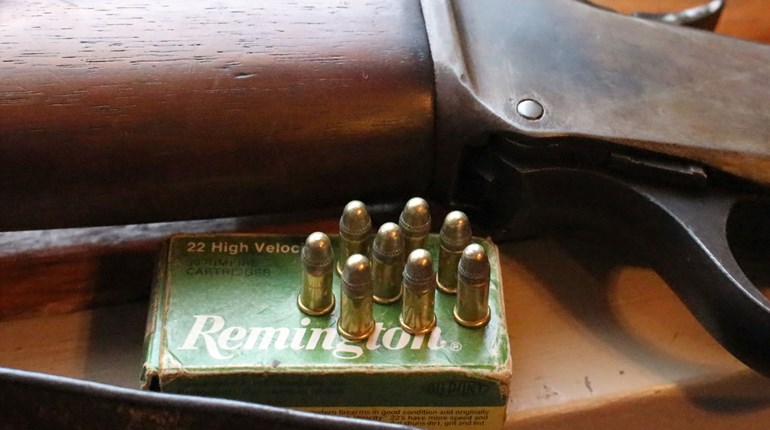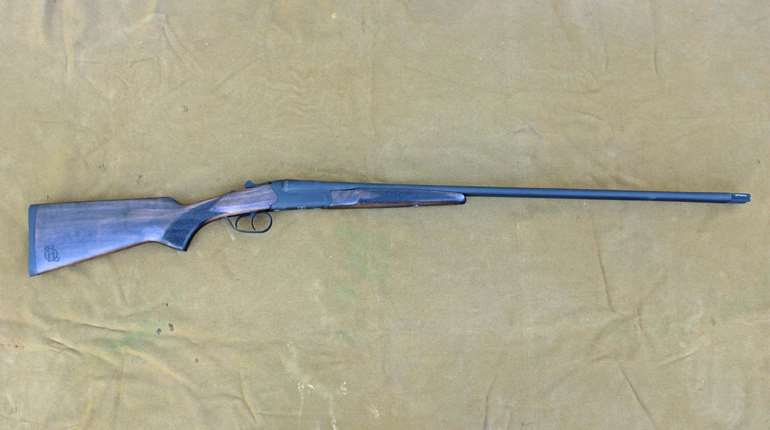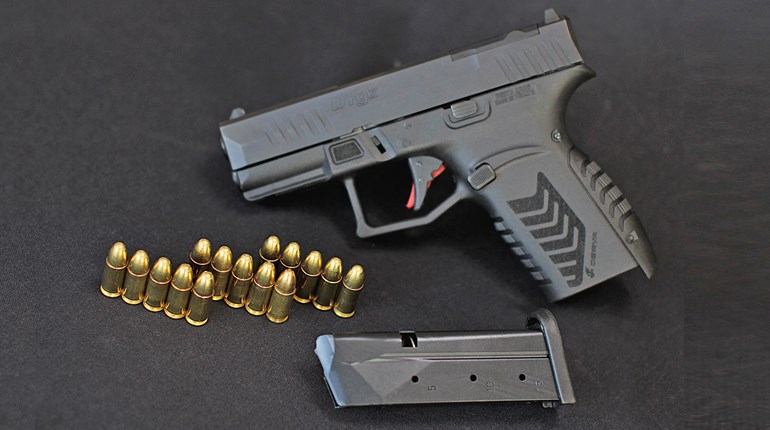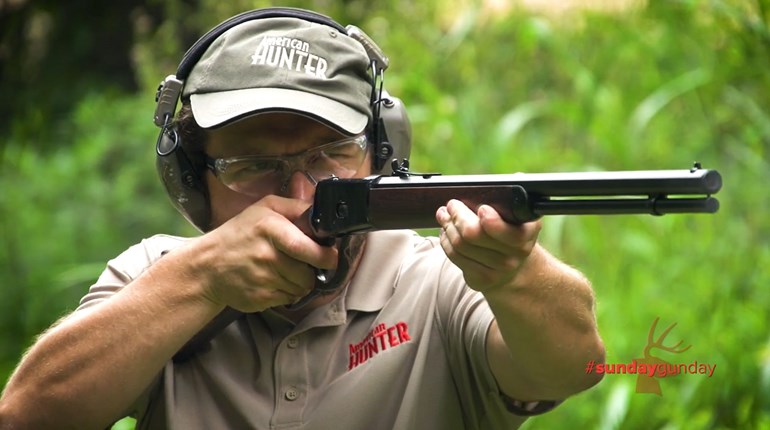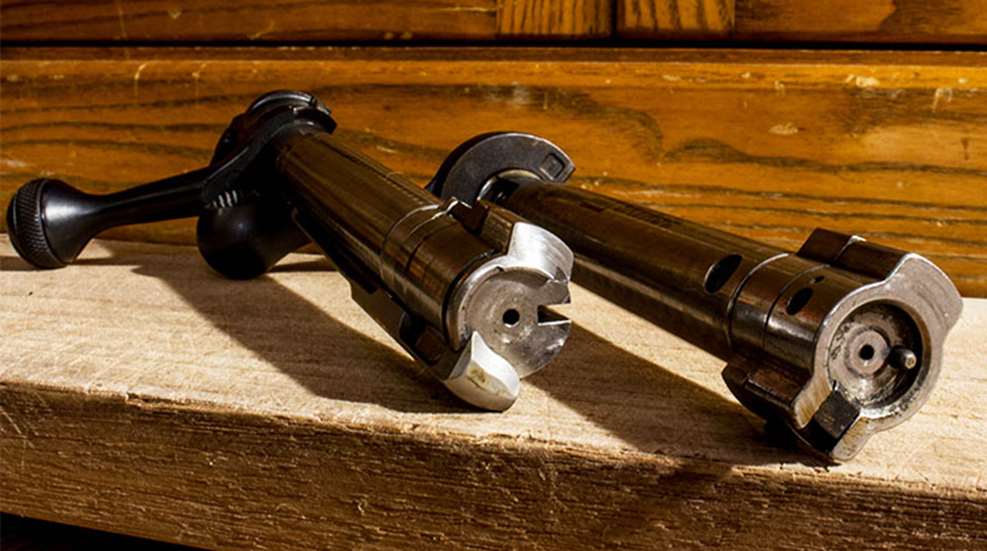
It’s been an argument that has gone on for well over a half-century: is the controlled-round-feed or the push-feed design better for the hunter? The discussion is as relevant to the campfire counsels as the magnum vs. standard cartridge argument, or whether you want all of the bullet’s energy to stay in your animal vs. an exit wound.
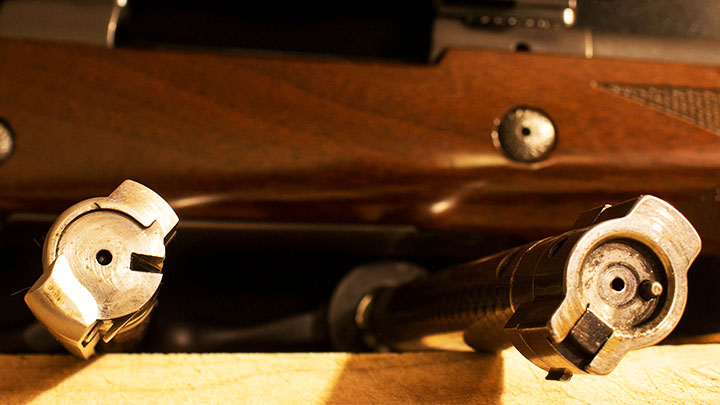
The repeating rifle went through all sorts of different designs in the late 19th century, as the technology for both metallurgy and production improved. Peter Paul Mauser’s bolt-action (read ‘turnbolt’ in England) rifles developed the controlled-round-feed system which we are all familiar with today; it remains on the Mauser 98 (and Rigby rifles) as well as being cloned in the pre-’64 Winchester Model 70, 1917 Enfield, Heym Express, Dakota 76, Montana Model 1999, Ruger 77, Kimber 84 and many others. The concept is simple: when the bolt is drawn rearward, the magazine follower raises a cartridge into the bolt’s path, and when the bolt is pushed forward, the extractor takes the cartridge—under control—into the chamber. Two locking lugs, 180-degrees apart, secure the bolt in the receiver, and there is usually a slot cut into the bolt face for the fixed blade ejector, though some designs utilize a spring-loaded plunger ejector. The positive side of the controlled-round-feed (CRF) design is that it minimizes the chance of a jam; the negative side is that the design is costly to manufacture.
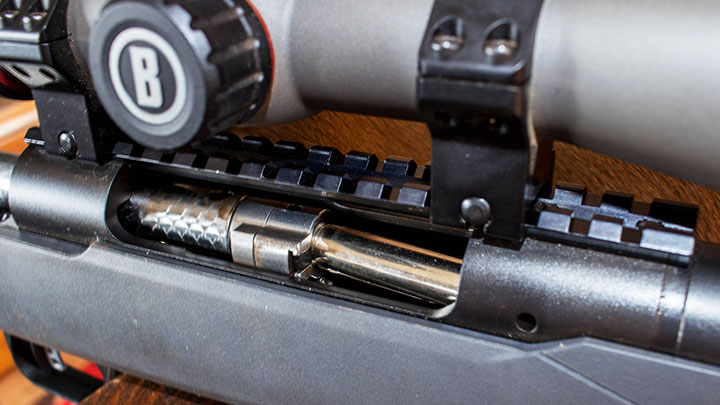
The push-feed bolt-action design—which I believe first came to the market in the Remington Model 721 and 722 rifles in the late 1940s—simply pushes the cartridge into the chamber without controlling it at all until it’s fully chambered. A portion of the bolt face is affixed with a spring-loaded extractor, and a spring-loaded plunger on the bolt face serves to eject the spent case. There are quite a few different lug designs, from those which mimic the CRF two-lug design, to the nine-lug design of the Weatherby Mark V. The Remington 700, Savage 110, post-’64 Winchester Model 70, Sako 75 and Mossberg Patriot are all good examples of push-feed rifles. Converse to the CRF actions, the push-feed guns are cheaper to manufacture, but you can run the risk of short-stroking the action and creating a double feed, which really sucks. And, it seems that when this malignance rears its ugly head, it’s in the worst situation possible: when a game animal is on the other end of the line. Of course we all should be working the bolt vigorously—especially when hunting—but that isn’t always the case, and it can cost you dearly.
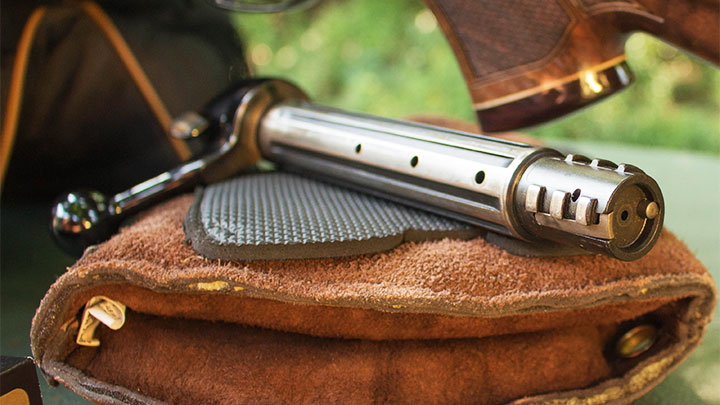
I do realize that there are a good many push-feed rifles, especially those models listed above, which will give a lifetime of service without posing an issue. That said, I have personally experienced a couple of broken extractors—at the bench, not in the hunting field—on push-feed guns of excellent pedigree, and while I still hunt deer and other common game animals with that design, I much prefer the CRF guns for dangerous game, or for those hunts far from civilization.
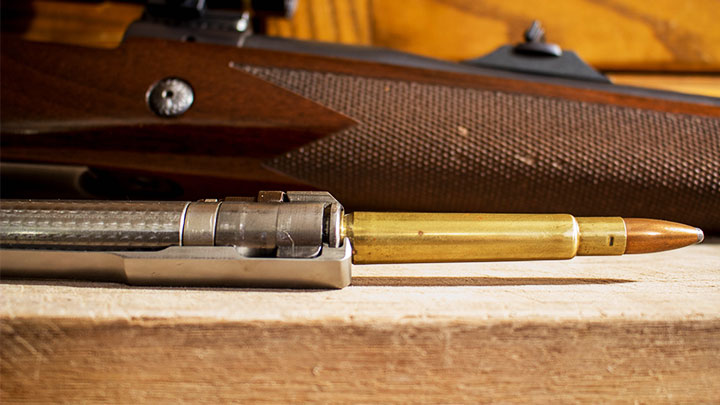
My experiences in the dangerous-game fields, along with the numerous conversations around the campfires with professional hunters of all sorts, affirm my affinity for the large, non-rotation extractor of the CRF rifles, as well as the fixed-blade ejector. Inarguably, I believe the Mauser 98 and its clones are over-designed, but this is a good thing. I’ve seen, heard or read of very few failures from the CRF rifles that didn’t involve incorrect ammunition, a barrel obstruction, or some other catastrophic error; the design is simply rock solid. I routinely hunt with a custom rifle built on a 1916 Mauser Gewehr 98 action, and with over a century of service under its belt, it shows no sign of slowing down. I am a fan of less moving parts, and spring-loaded extractors and ejectors can and will wear out.
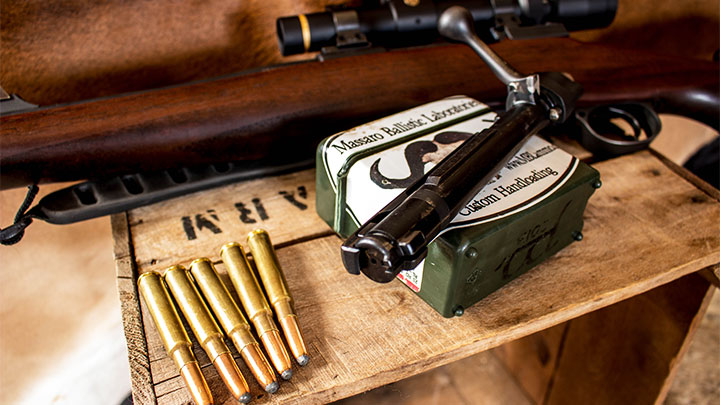
When I’m hunting in an area where a broken rifle results in a dejected walk back to the truck at worst, I have no problem using a push-feed design. I like the accuracy of the Savage 110 and its siblings, and I enjoy my Tikka T3x Lite; both are excellent performers in the field, but mine are chambered in common cartridges and I usually pursue deer, black bear and similar game with it. Many African professional hunters despise the push-feed designs—even the most expensive—as the heat of the tropics combined with the smaller extractor can pose an issue. For example, the .416 Remington caught a bad rap early on, not because of the cartridge design, but because the Model 700 rifle showed its flaws in the terrific heat of the African summers. Yes, there are PHs who rely on push-feed designs, and yes, there have been probably hundreds, if not thousands, of visiting hunters who have relied on the push-feed design to hunt dangerous game in Alaska, Africa and Australia. However, I know my own luck—Mr. Murphy and I have become close over the years—and I prefer to hedge my bets by using CRF rifles when pursuing dangerous game.
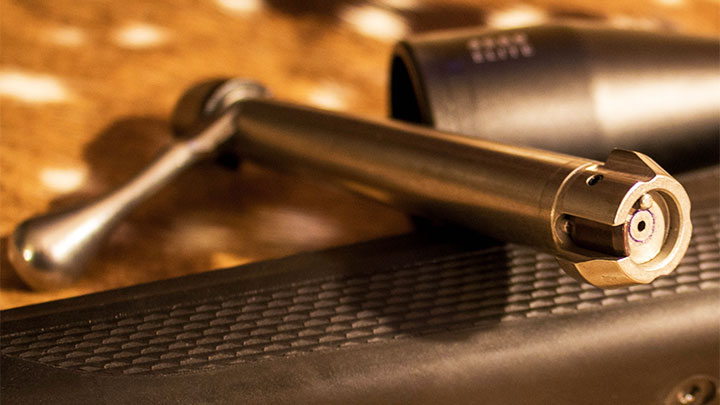
Is there a correct answer for the deer/antelope/sheep hunter? Probably not, as the argument can be made and made well for either design. The old ‘I want my rifle to be able to load a cartridge when upside down’ argument may not hold water, as I've seen push-feed guns work just fine at any angle, but I have seen a number of excited hunters foul up a push-feed rifle when excited. Try both, and spend a bit of time with each type before buying your next rifle; you may find you have a preference yourself.
Want to read more from Philip Massaro? Check out the following articles:
• Scope Magnification: How Much is Too Much?
• A Hunter's Guide to Staying Sane During the Coronavirus Outbreak
• Is Walnut Dead? Synthetic vs. Wood Stocks
• Rifles for the Traveling Hunter
• Top 5 Lever-Action Rifle Cartridges
• African Game Meat: What Happens After the Shot?
• Top 5 Underrated Deer Cartridges
• Top 5 Double Rifle Cartridges
• Deer Hunting: Were the Good Old Days Really That Good?
• Essential Gear for the Traveling Hunter
• 4 Reasons to Hate the 6.5 Creedmoor
• 4 Ways to Fine-Tune Your Rifle During the Off Season
• Review: Savage Model 110 AccuFit System
• Top 8 Bullets for African Plains Game
• Review: Tikka T3X Lite
• Top Bear Rifles and Loads
• 3 Rifle Cartridges to Hunt the World
• Why My Cartridge is Better Than Yours
• Top 5 Handgun Hunting Cartridges
• An Ode to the Ruger Model 77
• Top 5 Hunting Cartridges of the 21st Century
• Top 5 Deer Bullets for 2018
• An Ode to the .30-30 Winchester
• 5 Reasons to Book a Spring Bear Hunt
• An Ode to the Ruger Mini Thirty
• Boattail vs. Flat-Base Bullets
• How to Build a Custom Rifle
• Choosing a Cartridge for North America's Big Game
• Top 5 American-Made Hunting Rifles
• How to Choose a Buffalo Rifle
• An Ode to the .223 Remington
• Top 5 Coyote Cartridges
• The Ultimate Long-Range Hunting Cartridge
• The Greatest Whitetail Cartridge Ever Designed
• An Ode to the Browning BAR
• Top 5 Bear Bullets
• Do You Really Need a Magnum Cartridge?
• Why the Ruger No. 1 is Not No. 2
• Top 10 Mythical Game Species
• Top 5 Monometal Soft-Point Bullets
• Top 5 Subsonic .22 Long Rifle Loads
• The Most American Rifle Cartridge
• Tips for the Traveling Hunter
• How to Choose a Gun Safe
• Best Gun Cases for the Traveling Hunter
• An Ode to the .30-06 Springfield
• Top 5 Boutique Bullet Companies
• Top 5 .22 Long Rifle Loads
• 5 Reasons Round-Nose Bullets Are Still Cool
• Top 5 Dangerous Game Loads
• Top 5 Turkey Loads
• 5 Rifle Cartridges That Need to Make a Comeback
• Top 5 Safari Calibers
• 5 New Year's Resolutions for Hunters
• What Your Favorite Rifle Cartridge Says About You
• America's Most Wanted Cartridges
• America's Strangest Game Laws
• What Your Favorite Rifle Cartridge Says About You, Part II
• Top 5 Overrated Rifle Cartridges
• Top 5 Underrated Rifle Cartridges
• 5 Cartridges You Might Not Know About
• Top 5 Wildcat Cartridges
• An Ode to the Ruger Mini-14
• Top 5 Hog Loads
• Why .30-30 Winchester Will Never Die












